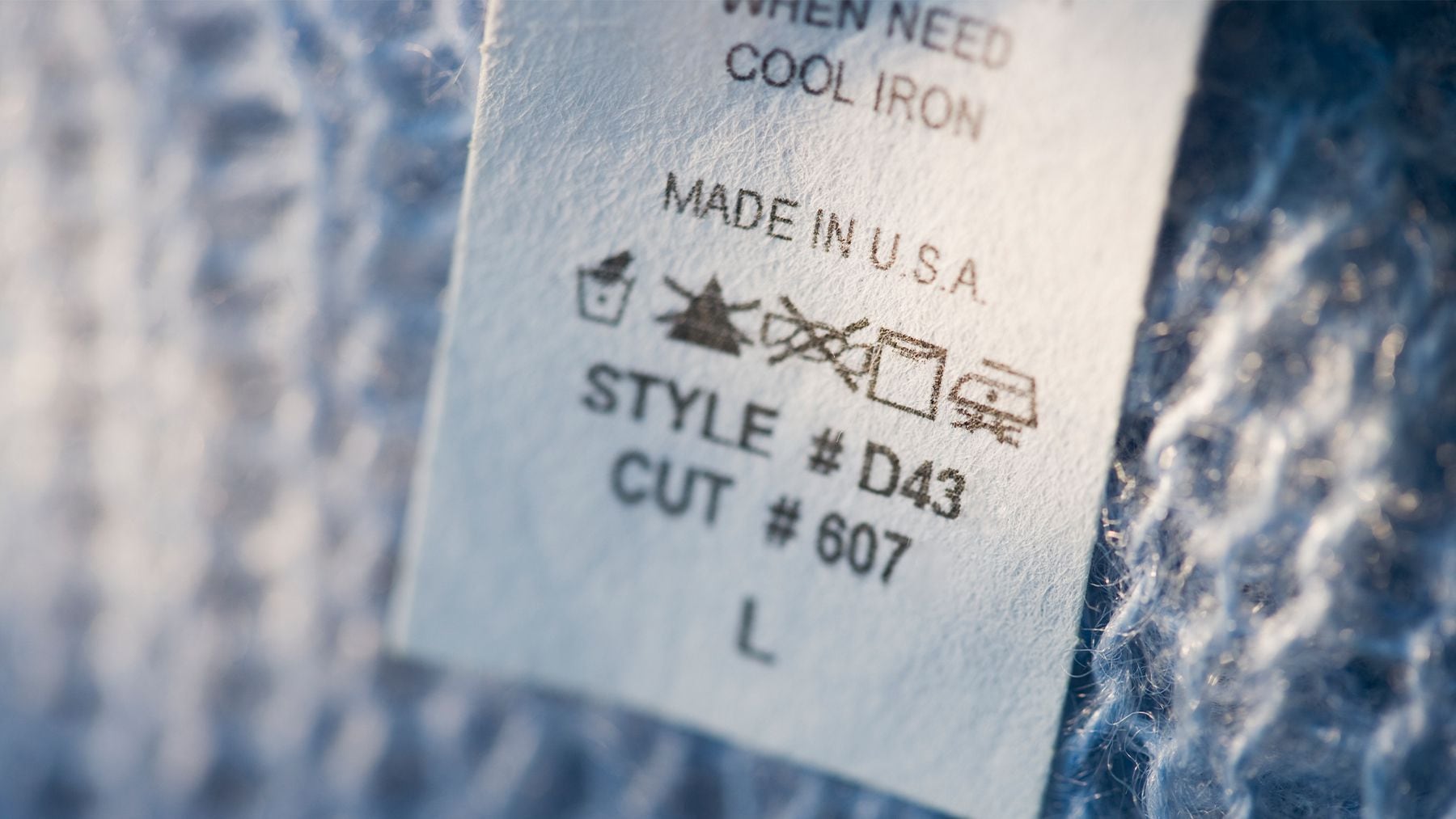The Fashion Industry’s War on Clothing Tags
The fashion industry has a new cause: getting rid of those annoying, sometimes itchy tags stitched into clothes.
On June 9, the American Apparel & Footwear Association — a trade group representing more than 1,000 brands, retailers and manufacturers — wrote a letter to the US Congress asking for legislation that would pave the way for brands to get rid of physical labels in clothing if they chose. Instead, they could attach a QR code, URL or some other means of directing consumers to information about fibre content, country of origin and care instructions digitally. They could even print that code onto the garment and do away with tags entirely.
While it may seem like a small concern for a large trade group, digital labelling could have very real implications for fashion brands, consumers and other stakeholders in the clothing industry, such as resale businesses and textile recyclers. The EU has proposed its own rule that would make digital “product passports” mandatory on regulated items to make it easier for them to be traced, recycled and repaired.
“Allowing for mandated information about a garment to be delivered through a digital label would improve accessibility, give consumers the regulatory information they need plus access to more information about the product, and help the industry meet its sustainability goals,” AAFA argued in its letter.
It also said the change would address what it called “label creep” — the multiplying labels in different languages, often in tiny type and accompanied by a jumble of confusing symbols, that can result in bulky booklets of tags. They can be hard to read and uncomfortable, leading many consumers to remove them.
Nate Herman, senior vice president of policy at the AAFA, which started pushing the issue in 2020, said there’s strong industry support for digital labelling among the group’s members, as well as among its counterparts in several other countries.
Lately, more brands are also embracing the concept of creating digital IDs for their clothes that go well beyond providing just material and care information.
“Digital IDs provide so much more richness and flexibility in the information and the connections we can create with consumers,” said Joon Silverstein, Coach’s senior vice president of global and North America marketing and sustainability. “There are a lot of reasons why we see physical product tags transitioning to digitised ones over time.”
The Positives and Negatives of Digital Labels
Of course, there’s a possible downside to abandoning physical tags. It would create an extra step for consumers to get information. Though QR codes have become much more common, it’s unclear how many shoppers would actually scan one or enter a URL into a browser to get product information or pull up care guidelines anytime they need to do laundry.
“I don’t think it’s any worse than how consumers currently engage with tags, which is cutting them out before they even look at them,” said Alden Wicker, founder of the site Ecocult and an independent fashion-sustainability journalist.
Wicker, who works to educate shoppers about what’s in their clothes and has written a forthcoming book about harmful chemicals in clothing, noted digital labels could be useful for providing additional information like chemical ingredients and possible allergens in a garment including dyes, formaldehyde and durable water repellants. The chemicals in clothing can also be a barrier to recycling, she added, as H&M and Ikea have noted.
She believes the switch to digital labels may ultimately be inevitable, but added that the industry should act in unison so consumers aren’t confused with a mix of physical and digital tags.
Stephen Lamar, president and chief executive of AAFA, acknowledged that there will be shoppers who might not want to scan a QR code.
“But they will, I think, quickly learn that’s an extra step that pays dividends down the road,” he said.
Digital labels could also carry information like a garment’s sustainability credentials or instructions for repairing or recycling. Imagine the label creep if that sort of detail were added in the form of physical tags.
Businesses along fashion’s value chain would also benefit, according to Lamar. If a shipment of goods is intended for sale in one country and only has tags for that location, diverting it for sale elsewhere — in the case of supply-chain disruptions due to a pandemic, for instance — can require cutting out the tags and attaching new ones.
And if consumers cut tags out of their clothing, it becomes difficult to identify the fibre content of the fabric. For textile recyclers, that can make it hard to recycle a product, and for resale businesses, that’s less information for customers. A small QR code that’s more likely to stay in the garment would preserve that information — assuming of course it doesn’t become unreadable through washing or damage and isn’t removed itself.
The Push for Digital IDs
Even if customers are receptive to getting information about their clothes digitally, it would still fall on brands to link every clothing item to its corresponding profile online. That’s no small task, especially if brands want to provide a deeper level of detail about a product.
Coach hasn’t yet rolled out its digital IDs, but Silverstein said they will offer information about the origin and impact of materials, as well as a way to trace products and prove authenticity on the secondary market. Coach is even looking into using the IDs for richer storytelling about the people and processes behind its goods.
“We have to pull all those data streams, which today are often fragmented across supply chain systems, product information systems, partner systems, together to flow into and integrate into that one digital passport,” Silverstein said. “That is one of the key challenges for brands in implementing digital IDs.”
It’s currently developing the project with Eon, a platform that creates and manages digital product IDs for brands and retailers including Yoox Net-a-Porter and Gabriela Hearst. Eon said it’s also serving as a technology advisor to the AAFA on its effort to digitise labels. But while it handles the work of creating the digital ID, it’s still up to Coach to fill it out.
Silverstein wouldn’t comment on the costs involved but described the project as an investment into capabilities that will enable a more circular future.
To put just the current contents of material and care labels into a digital profile would be less labour-intensive, but before physical tags become a thing of the past in clothing sold in the US, the FTC would have to change how it enforces the rules on labelling. Other countries still have their requirements too.
For now, physical labels aren’t going anywhere — unless you cut them out.



